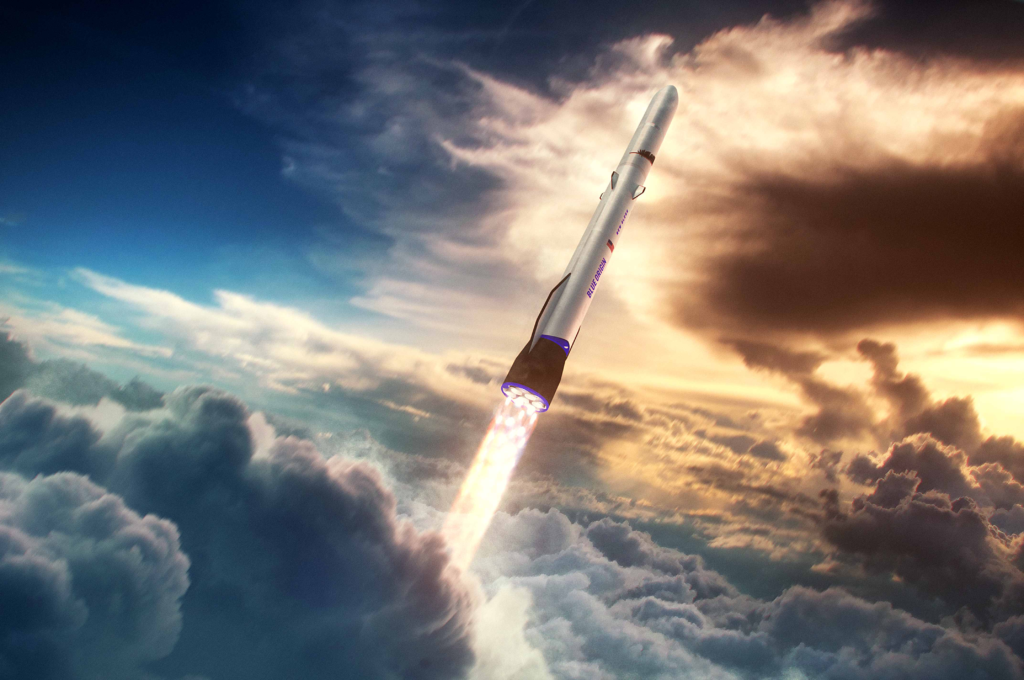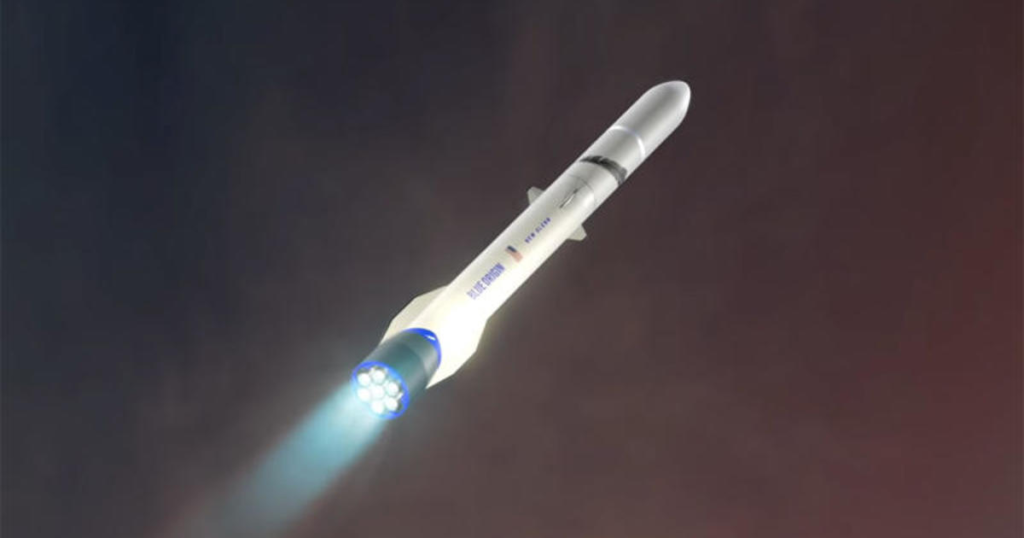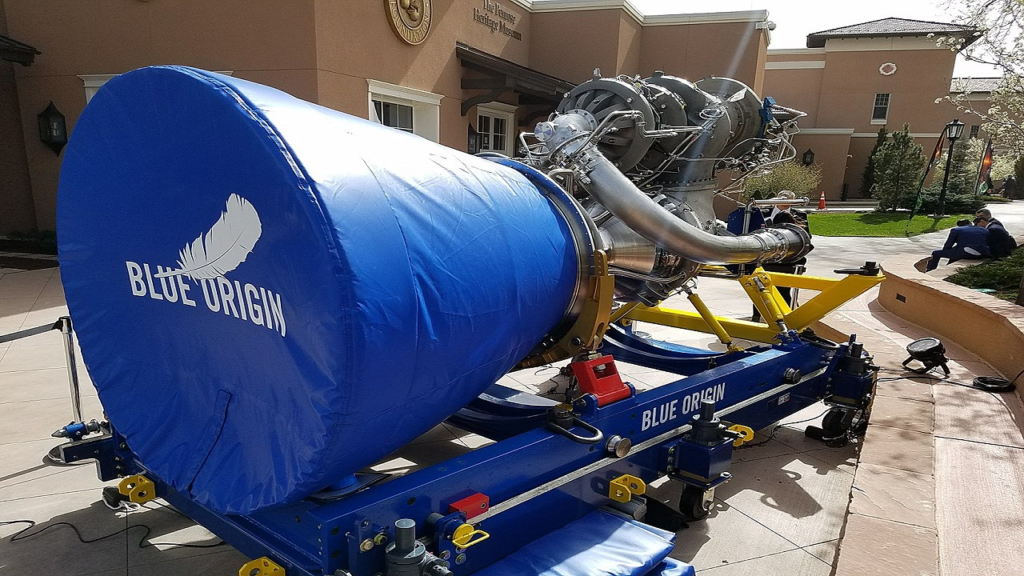
Space Force Changes Provide New Opportunities For New Glenn
While different companies within the space industry have varying goals, currently there is a big push toward partial and full reusability. Blue Origin for example is making an ambitious jump from New Shepard to New Glenn. This next generation launch vehicle could be a major success but either way, it will be a much risker option than what ULA has to offer for example.
In addition to this, in order to win the NSSL Phase 2 contracts, companies had to demonstrate their vehicles can fly payloads to nine “reference orbits” which requires medium and heavy launch vehicles. These general reasons among others have kept companies and specifically ambitious rockets such as New Glenn from big launch contacts with the Space Force.
Thankfully, the Space Force is working on a new approach for selecting national security launch providers within the industry. This has a direct positive effect on Blue Origin and Rocket Lab which have been left out of the mix for quite a while, whereas SpaceX and ULA have been winning a majority of the contracts. Here I will go more in-depth into what this means for New Glenn, the significance of these changes, what to expect in the future, and more.
Space Force Changes

The government is one of the leading customers of large contracts with different companies. This makes their contracts highly desirable if you are a U.S. launch provider. Back in 2020, United Launch Alliance and SpaceX won the Phase 2 competition, and their current contracts will be re-competed in 2024. In order to win the National Security Space Launch (NSSL) Phase 2 contracts, SpaceX and ULA had to demonstrate their vehicles could fly payloads to nine “reference orbits” which requires medium and heavy launch vehicles.
These requirements have limited different companies like Rocket Lab and Blue Origin which have long been against this process. Recently, however, the NSSL announced an alternate approach and new future opportunities. Specifically, the strategy for Phase 3 is less rigid. Under the “dual lane” approach, companies that can’t fly to all orbits can compete for less demanding missions. The U.S. Space Force executive officer commented, “We developed an acquisition strategy consisting of a dual-lane approach that provides access to diverse commercially available systems, increases resiliency through alternate launch sites and streamlined integration timelines, allows annual on-ramping of emerging launch providers and systems, secures launch capacity, enables supply chain stability, and enhances affordability for the most stressing National Security Space missions.”
The term dual lane approach refers to options and requirements under the contract. Starting with lane 1, this is a multiple firm-fixed price indefinite delivery, indefinite quantity (IDIQ) contract that would be open to all qualified bidders. Bidders are not required to meet all NSSL orbits to compete. Lane 1 will have annual on-ramping opportunities as emerging providers or systems are ready. This portion of the contract covers procurements from fiscal years 2025 to 2034, with a five-year base ordering period plus a five-year option. Task orders for launch services are competed on an annual basis among all IDIQ awardees.
You then have lane 2, which is similar to NSSL Phase 2. The Space Force will select two providers that can meet all NSSL orbits and unique mission capabilities. The contracts will have a five-year ordering period from fiscal year 2025 to 2029. Lane 2 payloads require launches to more stressing orbits, necessitating higher performance launch systems, and complex security and integration requirements. This specific lane also allows the government to cover rocket development costs to meet government-unique missions.
Based on this information, a lot of new opportunities could open up for Blue Origin and New Glenn in particular. Right now the company is working to develop, test, and eventually begin test flights of the next generation launch vehicle. However, it will still be a few years before the rocket flies. Combine this with its ambitious design and jump from New Shepard and you have a lot of added risk. These general factors would have made the Space Force steer clear of New Glenn until it had established itself with a descent flight heritage and mission success. While still important, they are opening the doors to some risker options that don’t necessarily meet every single requirement. A very positive change for commercial launches within the industry.
New Glenn Opportunities

Now that we know more about the new NSSL phase 3 procurement strategy and its impact on New Glenn, we can take a closer look at the launch vehicle’s progress and what Blue Origin has been working on. Currently, the company is still targeting a late 2024 launch date for New Glenn. The most recent news we received relating to this rocket was the new contract awarded to New Glenn for the ESCAPADE mission to Mars.
When it comes to New Glenn’s progress, Blue Origin keeps practically everything to themselves which makes it hard to track. This recent contract however is set to launch in 2024 which is extremely ambitious. This being said, NASA has a lot more access and information on the rocket than we do which could hint at its progress. On the bright side, a major aspect of New Glenn’s development and future has to do with the BE-4 engine which is about to fly on the first Vulcan launch. Thankfully, ULA CEO Tory Bruno is very active and frequently sharing updates on this first mission and the rocket’s progress.
Only hours ago when asked about Vulcan testing he replied saying, “Shortly. Probably not everything. it’s a large amount of testing. Currently exercising every electrical and mechanical system on the rocket that can be done dry, while doing the same at the pad, that can be done without the rocket. Then we’ll roll to the pad and do it all again…” On the bottom of this Vulcan is two BE-4 flight engines that we delivered last year. This marked the delivery of the first BE-4 shipset for United Launch Alliance (ULA), shipping the engines to ULA’s factory in Decatur, AL after final acceptance testing. Each of the BE-4 engines provides 550,000 pounds of thrust and has completed an extensive development program.
It’s hard to stress the importance of rocket engines and the impact they can have on the rocket itself. This initial test flight with Vulcan could have both very positive and negative effects on New Glenn’s future timeline depending on how the mission goes. 7 of these engines will not only provide the primary thrust for New Glenn but also be responsible for the booster’s propulsive landing. They highlight that BE-4 was designed from the beginning to be a medium-performing version of a high-performance architecture. It’s a conscious design choice made to lower development risk while attempting to meet performance, schedule, and reusability requirements.
In addition to the new contract and Vulcan’s upcoming flight with two BE-4 engines, the most we have heard on New Glenn has to do with its fairings. In the past couple of months, we have seen more work from Blue Origin regarding fairing recovery for New Glenn. Just months ago in December Blue Origin began testing payload fairing recovery operations. Here the company placed the fairing half in the water which floats. They then picked it up with a large crane and placed it on a stand. Finally using two separate cranes, they flipped and twisted the fairing before being placed on the truck. They also did a significant drop test as well.
Not to mention, early last year around February, we watched more tests related to the fairings with a jettison test. Blue Origin expressed that they were quite happy with the result of this test and the progress on the system. The PLF halves are joined laterally by a thrusting rail assembly, and at the aft end by a circumferential frangible joint, which together provide rapid, debris-free separation of the halves from each other, the fixed adapter, and the second stage. The PLF halves jettison shortly after second engine ignition on the second stage, and they are designed to thrust away to preclude contact with both the second stage and the payload by more than the required 25.4 mm (1 in) clearance. When it comes to recovering fairings, SpaceX and the Falcon 9 have been trying somewhat frequently. At around $6 million per rocket fairing it’s easy to understand why the company has been working to capture and reuse. Something we can expect to see more of from Blue Origin in the coming years.
Even with endeavors such as project Jarvis, we are seeing a slight shift toward more than just partial reusability with New Glenn. The initial launches will most definitely have an expendable upper stage with the possible exception of the fairings. As partially mentioned before, Blue Origin as a company is targeting 2024 for the first launch, however, a more realistic estimate would be later in 2025 as New Glenn still has a lot of work and testing necessary prior. On the bright side, its BE-4 engines are only months if not weeks away from a vital first flight test on ULA’s Vulcan. An important step in the future of New Glenn’s operations.
Conclusion
New Glenn just got some very good news considering its future launch opportunities with the change to how the U.S. military buys and contracts launches. The new phase is open to launch vehicles that don’t meet all the reference orbits and tolerates higher risk. This dual lane approach is something Blue Origin and other companies like Rocket Lab have been advocating for, and now this system is actually in place. We will have to wait and see how it progresses and the impact it has on the space industry.
